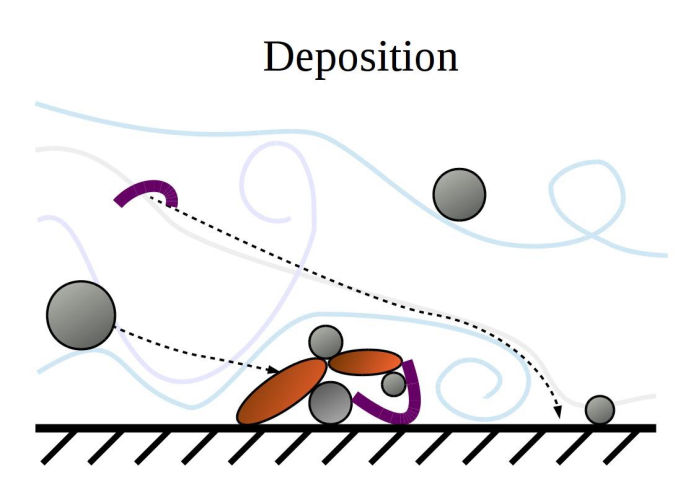
Keywords
Near-wall turbulent transport, particle-surface interactions, surface roughness, deposit morphology.

Near-wall turbulent transport, particle-surface interactions, surface roughness, deposit morphology.
Particle deposition is concerned with how particles suspended in a fluid come into contact with a surface and adhere to it. The accumulation of particles on a surface is sometimes referred to as "fouling".
The usual measure is the deposition rate (in m/s), which corresponds to the mass of particles deposited per unit surface and unit time divided by the particle concentration.
Particle deposition occurs in a wide range of situations that concern environmental, industrial and every-day applications such as:
+ Silt deposition and accumulation in pipe (leading to pipe clogging, i.e. the blockage of the fluid flow)
+ Deposition of colloidal particles (i.e. within the micrometer range) in heat-exchangers in the energy industry
+ Fouling of combustion engines due to soot particles in the automotive industry
+ Fouling of membrane filters in waster-water treatment and desalination facilities.
A particle deposit on a surface as a result of a two-step process:
+ the particle is first brought in close proximity to the surface by the fluid (transport step);
+ the particle can be attached to the surface if particle-surface interactions do not prevent it (attachment step).
Design a site with Mobirise